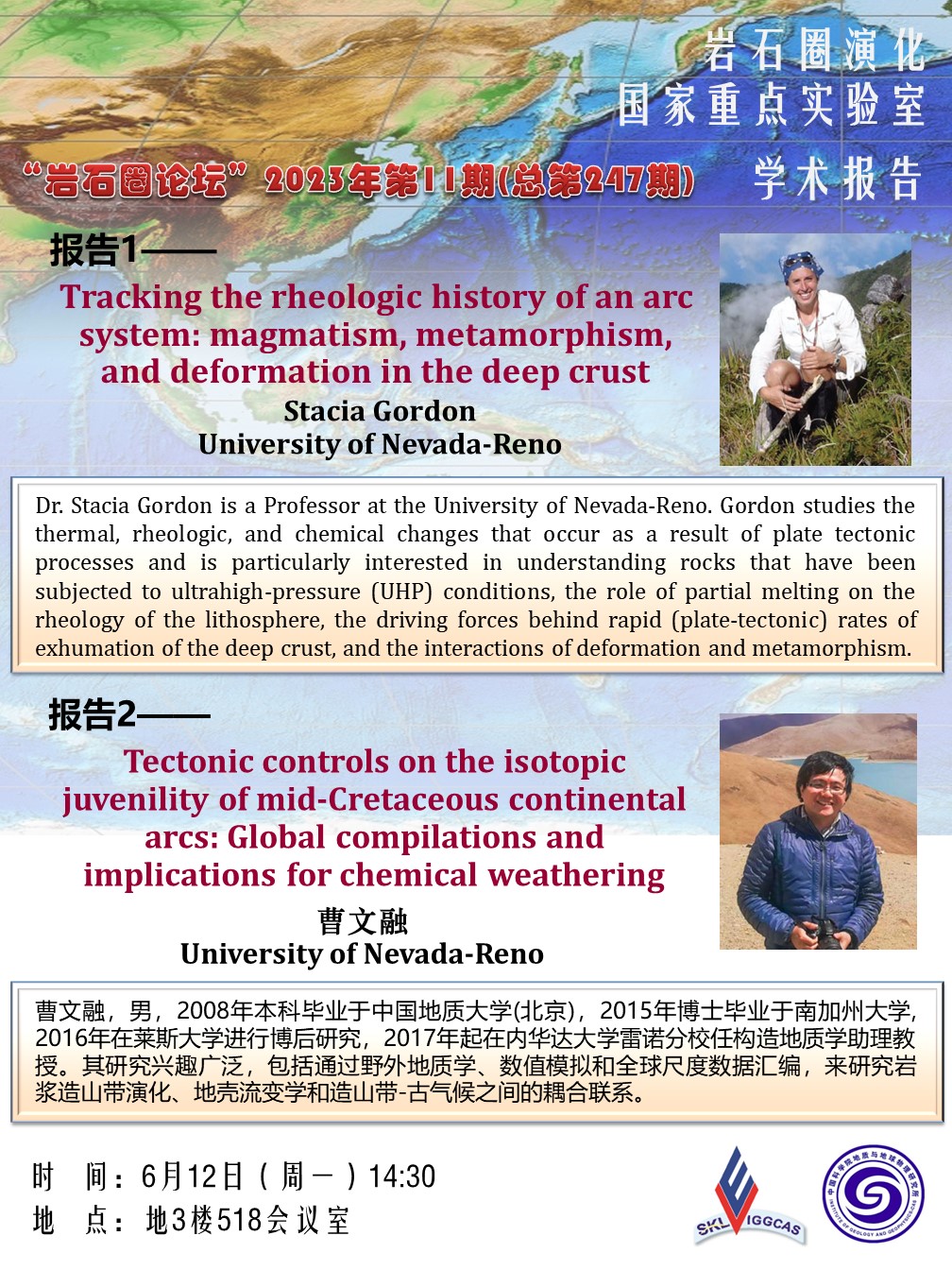
报告一简介: Continental magmatic arc systems are commonly characterized by periods of high-flux magmatism. This magmatism intrudes into the host rocks to the arc, which generally consist of metasedimentary rocks. In addition, sediments are commonly incorporated into the deep levels of arcs. Combined together all of these processes will change the rheology of the arc crust through time. The crystalline core of the exhumed Cretaceous–Eocene North Cascades continental magmatic arc, Washington, arguably contains the largest amount of metasedimentary rocks of any exhumed arc. Some of these metasediments represent host rocks to the arc and others were incorporated into the arc during active arc magmatism. The North Cascades arc is also unusual in that it exposes >40 km thick section of crust from lower-crustal rocks to basins that formed coeval with magmatism and metamorphism. In this study, we use the metasedimentary rocks of the North Cascades to track the metamorphic, partial melting, and deformation history and therefore the rheological evolution of this continental magmatic arc. We look at the relationship between these processes happening in the deep crust with extension and basin development in the upper crust. Together these data provide a comprehensive ~45 Myr tectonic history for this ancient arc system that can be related to other ancient arcs (e.g., Fiordland, New Zealand) and active arc systems (e.g., the Andes in South America). 报告二简介: Continental arcs influence the global carbon cycle via degassing and chemical weathering. Several studies also suggested that the isotopic composition of continental arcs plays an important role in controlling the strontium (Sr) isotopic composition of seawater through chemical weathering. Yet, geological or tectonic drivers of isotopic variations of continental arcs on a global scale are missing in previous studies. Here, we compiled two independent global databases for mid-Cretaceous (125-85 Ma) continental arcs. The first database maps the location, geometry, and tectonic nature of the basements upon which the arcs were built. The second compiles Sr-Nd-Hf isotopes data for these continental arcs. We find that isotopically-juvenile arcs form when their basements are generated by tectonic processes such as oceanic terrane accretion, upper plate extension, slab breakoff, and ridge subduction. During the mid-Cretaceous, most continental arcs were fully or partially built on juvenile basements and yielded juvenile isotopes on a global scale. Our compilation reinforces the importance of isotopically-juvenile continental arcs observed in the global Hf isotopes in detrital zircon for the mid-Cretaceous, but also provides the geological context for these trends. Since many of these isotopically-juvenile arcs were located in tropical or warm-temperate regions during the mid-Cretaceous, these uplifted rocks were preferentially eroded and weathered providing juvenile Sr isotopes to the oceans. This study highlights the importance of tectonic processes in controlling isotopic compositions of continental arc, which has implications for ocean chemistry, global chemical weathering feedback, and the long-term carbon cycle. |